#panicled aster
Text
Symphyotrichum Workout
Symphyotrichum lateriflorum (Calico Aster) on 10-9-22, #916-11.
Hello everyone! I hope this post finds you well. The past week has been fairly cool and it finally rained. This is a perfect time of the year to get dirty and do some fall cleanup.
One of the most baffling genera of plants on the farm has been the Symphyotrichum. Even pronouncing it can be a challenge. It’s…
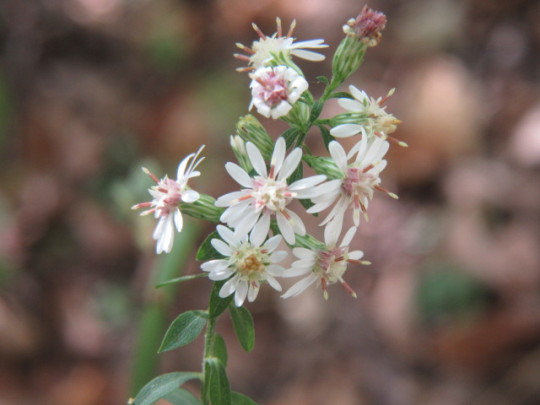
View On WordPress
#Symphyotrichum lanceolatum (Panicled Aster)#Symphyotrichum lateriflorum (Calico Aster)#Symphyotrichum novae-angliae (New England Aster)#Symphyotrichum ontarionis (Ontario Aster)#Symphyotrichum pilosum (Hairy White Oldfield Aster)#Symphyotrichum praealtum (Willowleaf Aster)
0 notes
Text




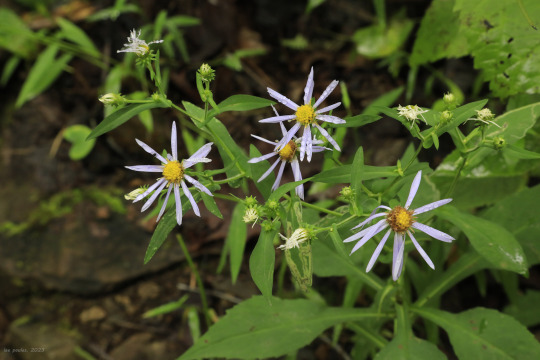
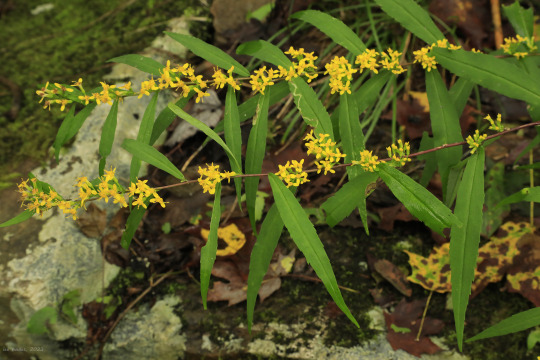
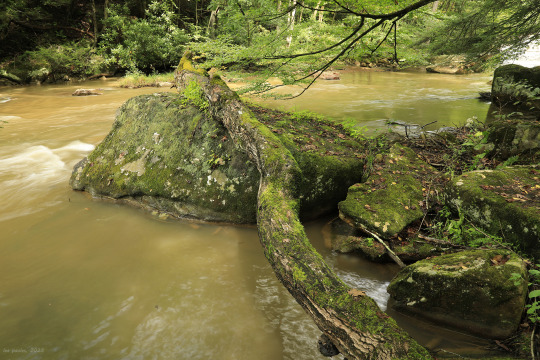
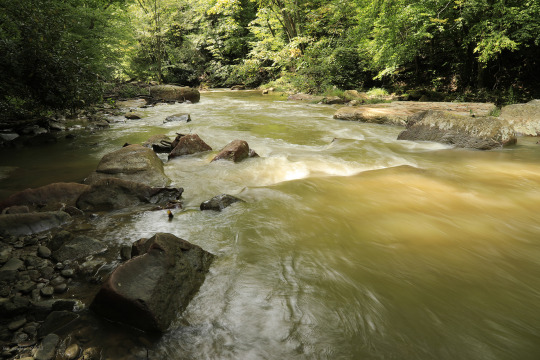
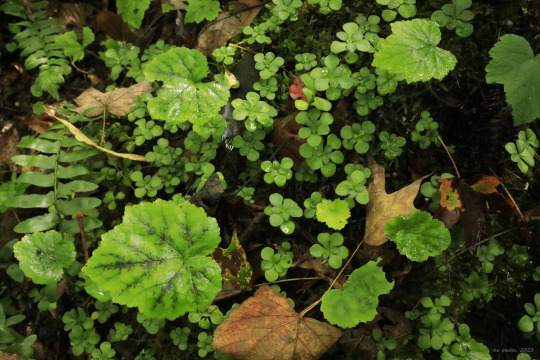

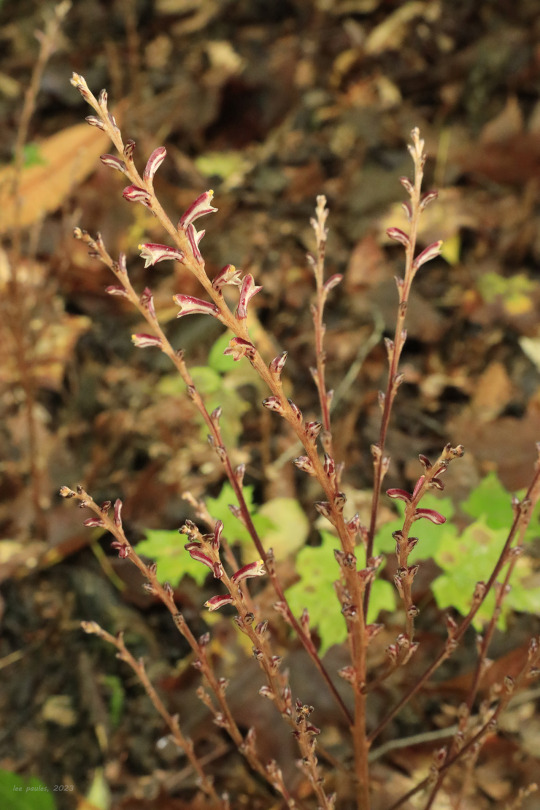
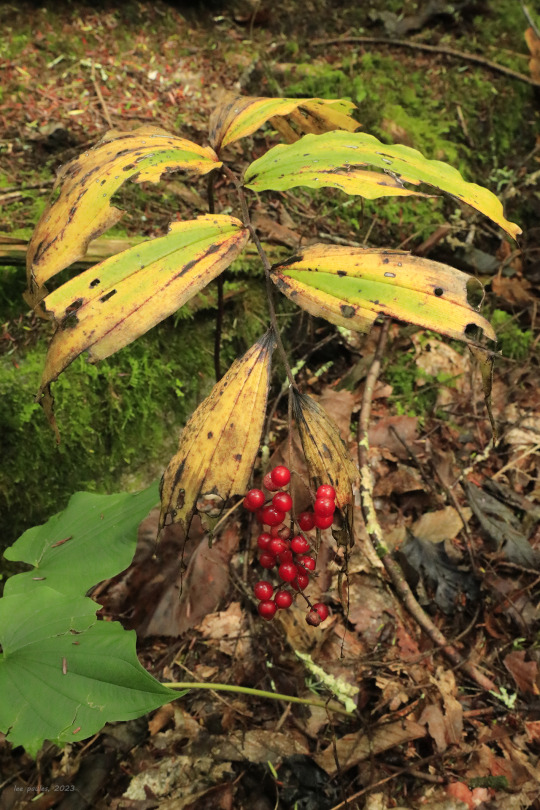
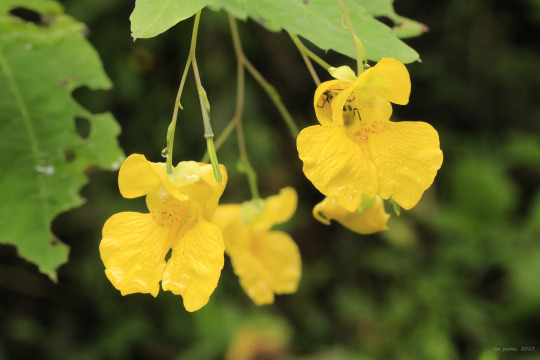
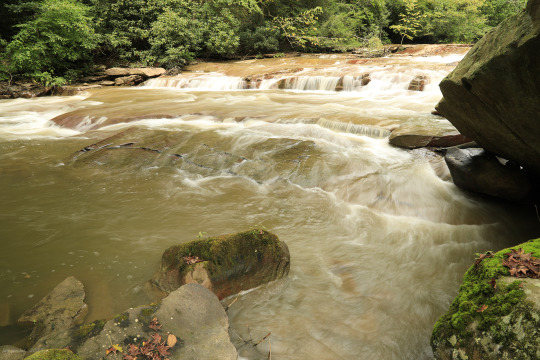

Despite its undignified name, Muddy Creek is a lovely mountain stream that normally runs fast and clear on its steep descent to Cheat River. But after a week of heavy rain in NC-WV, the stream looked a bit murky yesterday. Not even the sediment washing away from the mountains dims its beauty in my eyes. And the enchanting, moss-encrusted forest along its bank holds its own late summer treasures.
From top: great blue lobelia (Lobelia siphilitica), which pairs beautifully with cardinal flower to provide late summer color in a native wildflower garden; white wood aster (Eurybia divaricata), which is the most common of the shade-loving white asters in this area; crooked-stemmed aster (Symphyotrichum prenanthoides), also known as zigzag aster, whose clasping, spatula-shaped leaves distinguish it from big-leaf aster, another woods-loving aster with lavender flowers; blue-stemmed goldenrod (Solidago caesia), whose spreading, yellow-flowered stems provide stunning late-season color in a native wildflower garden; an intensely-green collage of moss, woodland stonecrop (Sedum ternatum), Christmas fern (Polystichum acrostichoides) and heartleaf foamflower (Tiarella cordifolia), which I am trying hard to reproduce in my own native wildflower shade garden; the shaggy-maned stem of Coker's Amanita (Amanita cokeri), one of the most impressive mushrooms of Appalachia's summer forests; beech-drops (Epifagus virginiana), a parasitic plant that grows and subsists on beach tree roots; the bright red berries of false Solomon's seal (Maianthemum racemosum); yellow jewelweed (Impatiens pallida), whose explosive seed pods give the plant its other common name, pale touch-me-not; and narrow-leaved tick-trefoil (Desmodium paniculatum), also known as panicled tick-trefoil, a late summer pea whose sticky seed pods commonly hitch rides on shoes and boots.
#appalachia#vandalia#west virginia#wildflowers#flora#summer#muddy creek#cheat river#preston county#fungi#coker's amanita#great blue lobelia#white wood aster#crooked-stemmed aster#zigzag aster#blue stemmed goldenrod#woodland stonecrop#christmas fern#heartleaf foamflower#beech-drops#beech drops#false solomon's seal#solomon's plume#yellow jewelweed#pale touch-me-not#narrow-leaved tick-trefoil#panicled tick-trefoil#falls#rapids#mountain stream
103 notes
·
View notes
Text

white panicle aster - abandoned lot, baldwin ave, jsq, jc, nj - yashica mg-1 & 400 speed color film - developed at eliz digital & scanned with minolta dimage dual iii
#35mm#aster#plants#botany#ecology#flowers#white flowers#gravel#abandoned#abandoned places#film photography#35mm photography#city photography#grunge#urbex#urban exploration#soft grunge#journal square#jersey city#new jersey
24 notes
·
View notes
Text
More flowers from my garden!
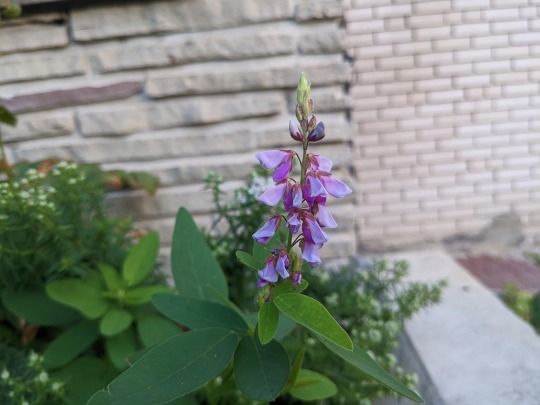
Desmodium canadense (showy tick trefoil)
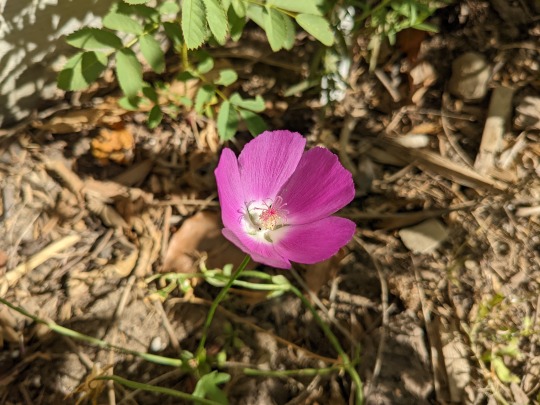
Callirhoe involucrata (purple poppymallow)

Pycnanthemum virginianum (Virginia mountain mint)
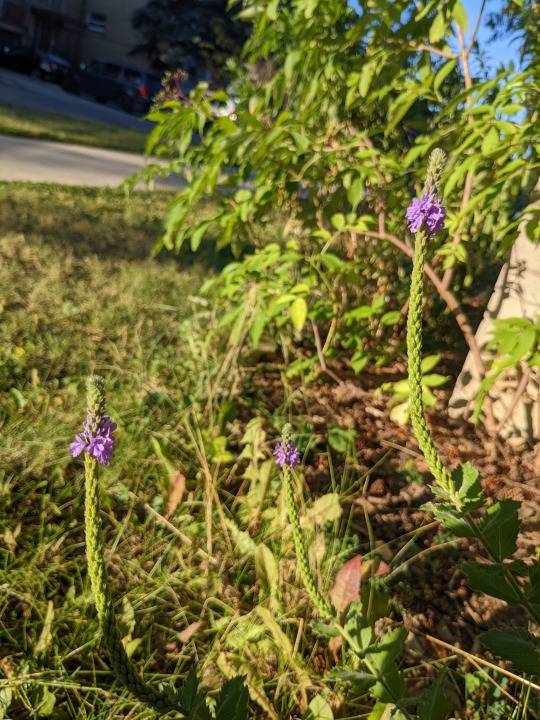
Verbena stricta (hoary vervain)

Eupatorium purpureum (sweet joe-pye-weed)

Monarda punctata (spotted beebalm)
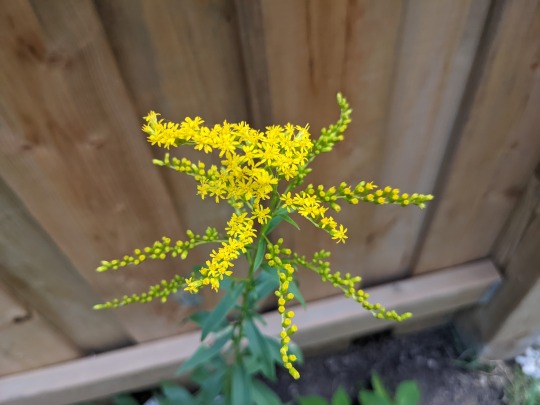
Solidago juncea (early goldenrod)
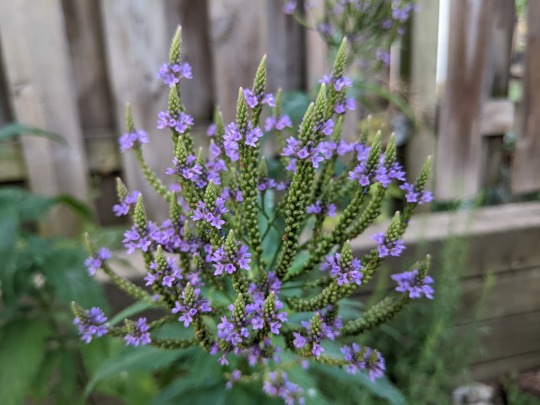
Verbena hastata (blue vervain)
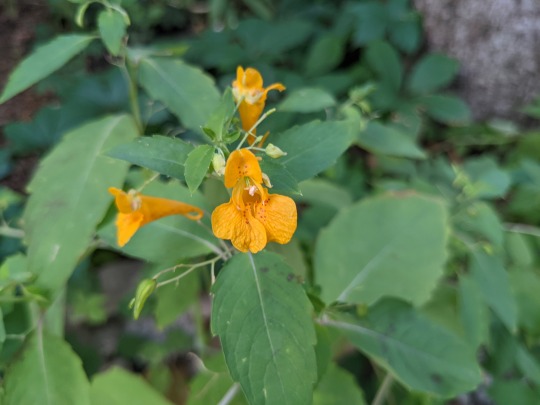
Impatiens capensis (spotted jewelweed)

Helianthus nuttallii (common tall sunflower)

Symphyotrichum ciliatum (fringed blue aster)
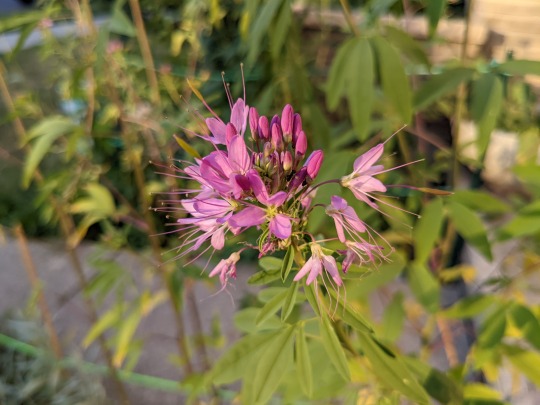
Cleome serrulata (Rocky Mountains bee plant)

Actaea racemosa (black snakeroot)

Helianthus pauciflorus (stiff sunflower)
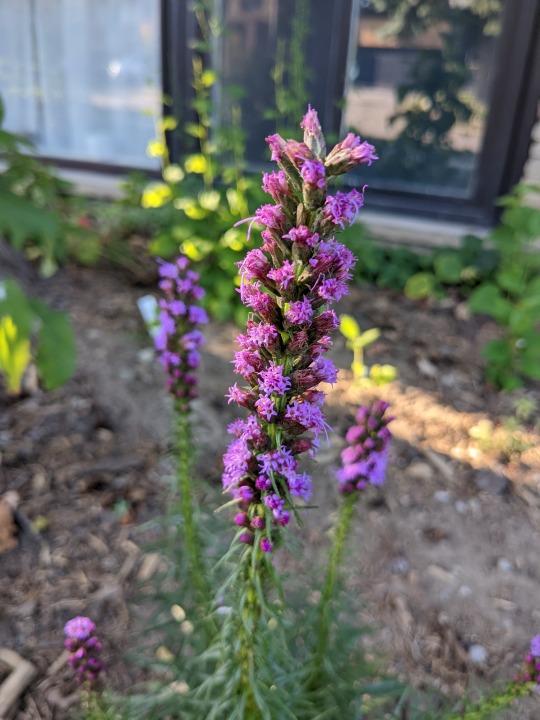
Liatris spicata (dense blazing star)

Hypericum punctatum (spotted St. John's wort)

Spiraea alba (meadowsweet)
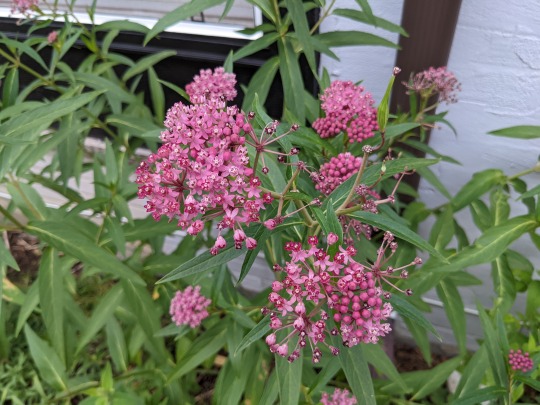
Asclepias incarnata (swamp milkweed)

Agastache foeniculum (anise hyssop)
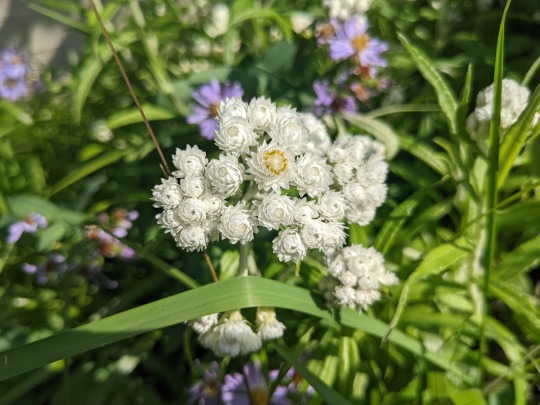
Anaphalis margaritacea (pearly everlasting)

Symphyotrichum laeve (smooth aster)
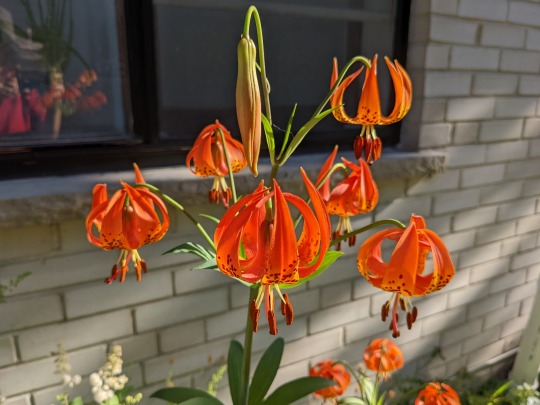
Lilium michiganense (Michigan lily)
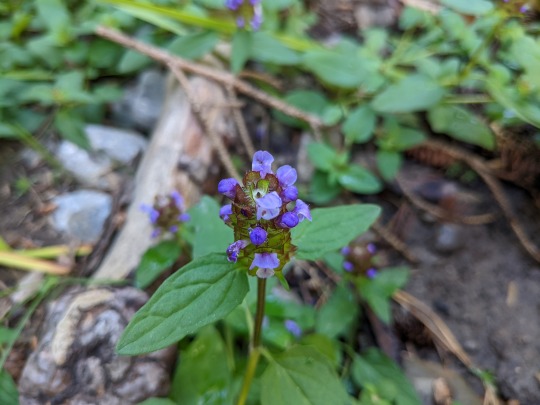
Prunella vulgaris ssp. vulgaris (common selfheal)

Symphyotrichum lanceolate (panicled aster)

Astragalus canadensis (Canada milk vetch)
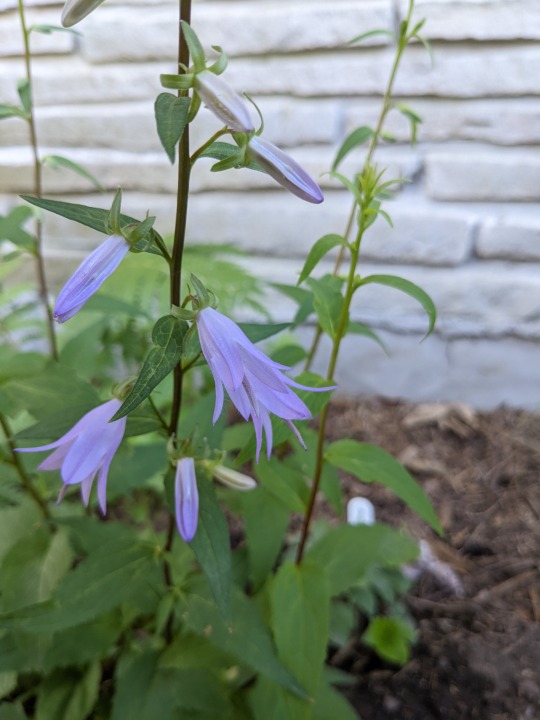
Campanulastrum americanum (marsh harebell)

Sambucus canadensis (common elderberry)

Mertensia paniculata (tall bluebells)
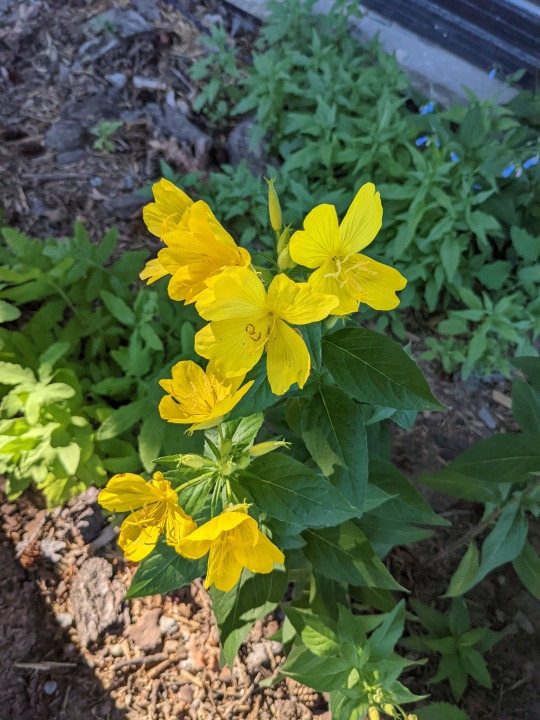
Oenothera fruticosa (narrow-leaved sundrops)

Lilium philadelphicum (wood lily)
And cut off again. lol
16 notes
·
View notes
Text
October 2, 2023
The Late Night Post with Ju Te An
Progress of the first day – unfortunately spread a bit into the next day due to various distraction and some procrastination.
Successes!
• Internship presentation finished
• Greenhouse homework completed
• Took various photos of flowers
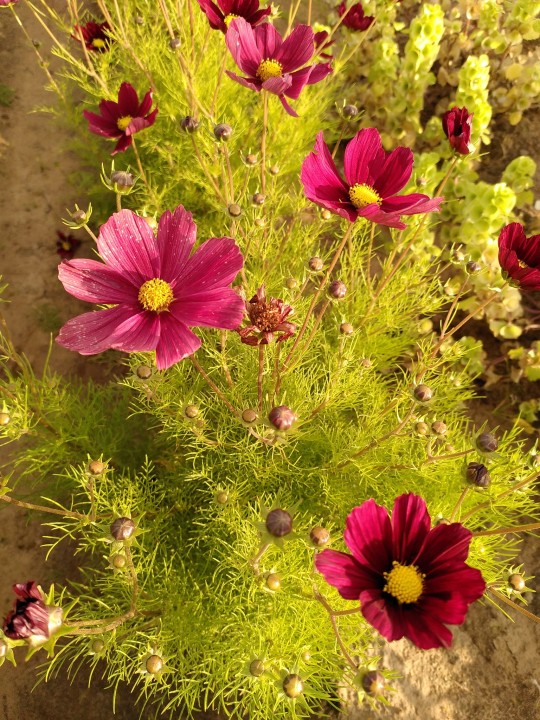
Cosmos bipinnatus – Garden cosmos or Mexican aster (🇪🇪: harilik kosmos)

Hydrangea paniculata – Panicled hydrangea (🇪🇪: aedhortensia)
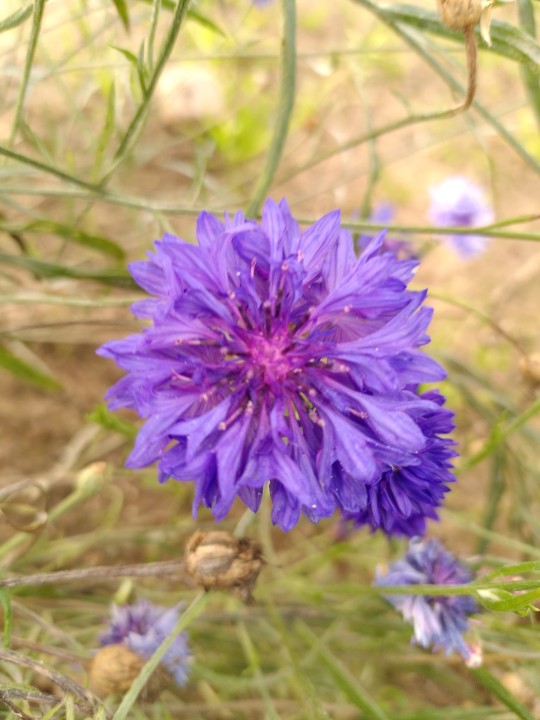
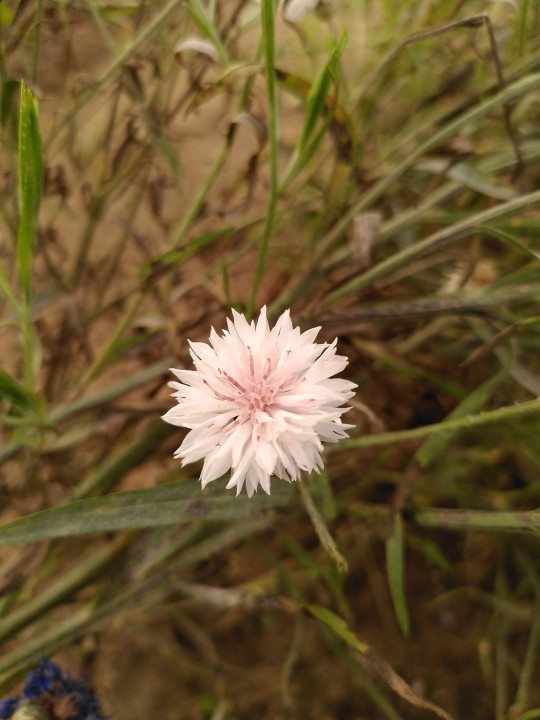
Centaurea cyanus – cornflower, the national flower of Estonia! (🇪🇪: rukkilill)
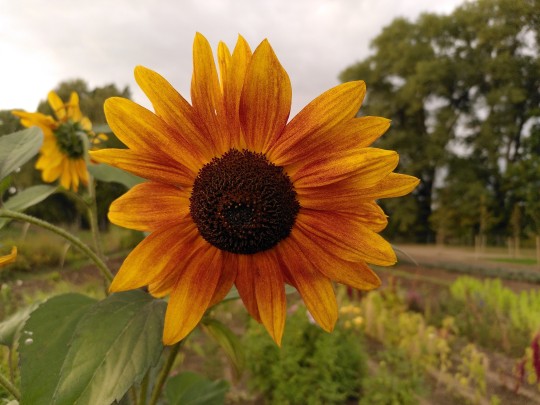
Helianthus annuus – Common sunflower 🌻 (🇪🇪: harilik päevalill)

Amaranthus caudatus – Foxtail amaranth, velvet flower or love-lies-bleeding (🇪🇪: longus rebashein)
Did not get around to reading or writing again, will try to procrastinate with those the next time!
Until next time, good night!
7 notes
·
View notes
Photo

New Plant!
1. Panicled Aster
1 note
·
View note
Text


Went on a 6 mile hike today and took my wildflower identification book with me :) saw a lovely clearing absolutely full of butterweeds (plus a few thistles)! The bumblebees were hard at work out here :)
#personal post#aes#i have a bunch of flowers to press and re-identify#i found all kinds of flowers out there!#lyre leaf sage and periwinkles and panicled asters#crimson clovers too
2 notes
·
View notes
Text

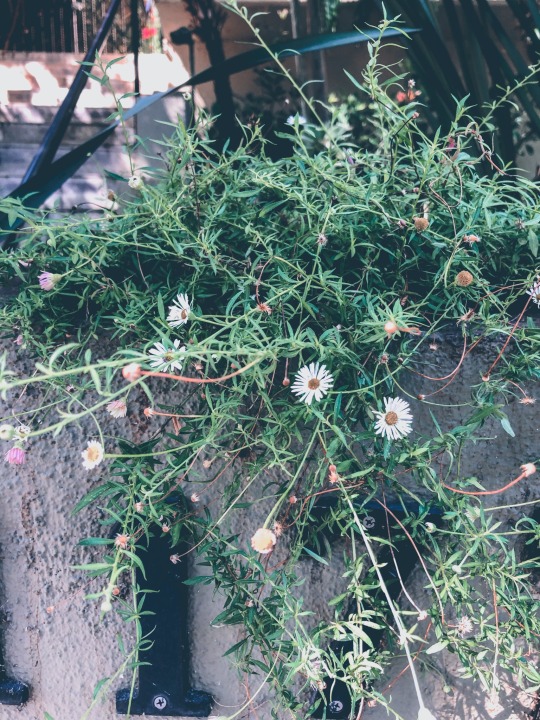
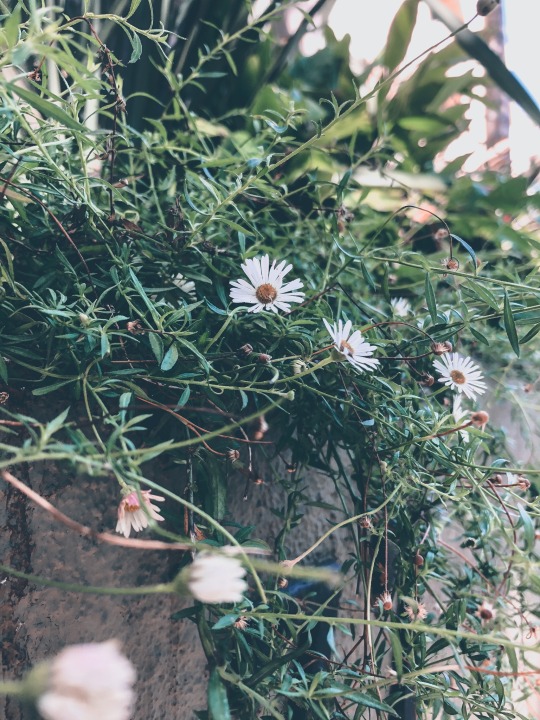
White-panicle aster
Symphyotrichum lanceolatum
A completely impromptu poem nobody asked for or wanted:
Your melody hums to many.
Walk into the ring
And fall prey to the faerie.
Lured by your delicate song and
Calls of innocent worry.
#og posts#study blog#studyblr#study aesthetic#plantblr#plantlove#plants#plantphotography#plantcore#cottage aesthetic#cottagecore#fairy core#nature core#naturephotography#floral pics#floral#poetryblr#poetry#tumblr poem#prose poem#faerycore#fae folk#faerie#faery garden#faerie aesthetic
9 notes
·
View notes
Text
I had to do my final harvest today, since the temperatures in the night time have been getting down a little too close to frost for comfort. (Even now I’m only keeping warm with some lemon ginger tea!) I got another big flush of tomatoes, picked the last of my peppers, the last of my beans, pulled up all the sweet potatoes, and deadheaded the sunflowers that needed it. Since the autumn equinox is just hours away, I guess I’m right on time!
I also gave the area around the forest another walkthrough. The wild (and invasive) multiflora rose hips have come out, which is exciting. Some of them are red already, but I’ll give them more time before I pick any. After a frost is usually better.
I also found some wild aster growing at the edge of the forest and next to a stump. I’m not certain what kind - it’s not the calico or panicled type that was growing elsewhere a few days ago. If I had to guess, I’d say it’s white wood aster. Very cool to see multiple subspecies of aster growing here this year.
1 note
·
View note
Photo
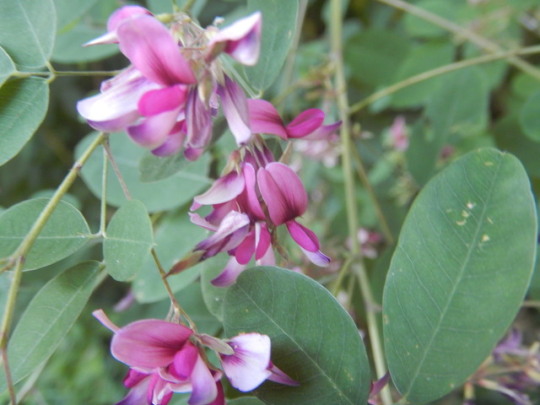


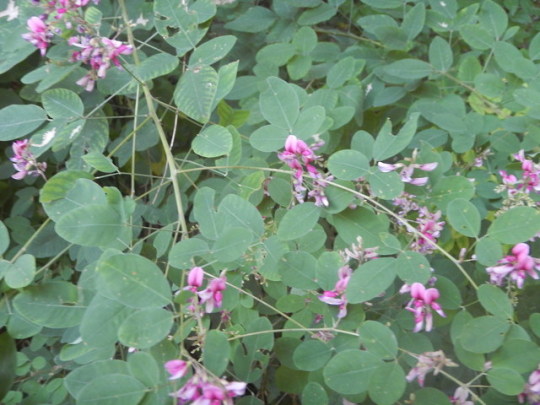


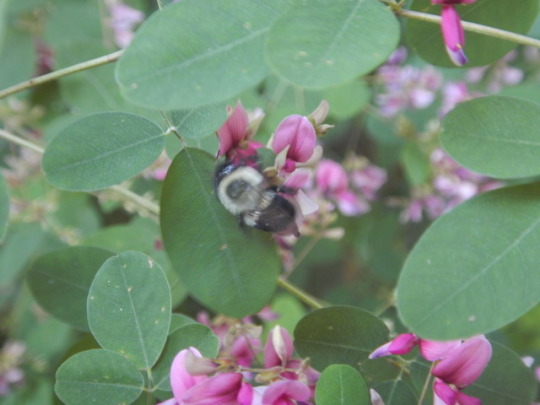

http://www.indiana.plantatlas.usf.edu/Genus.aspx?id=272
@wildfloweroftheday a classic example of when you ask a professor and they says it looks like
Showy tick trefoil
and you look at them and go ^ uhh the common name for like 10+ tick trefoil are also “showy tick trefoil” pls deliniate.
^_^ i mean I just want to make a strange database about all of the sp. listed in indiana plant atlas on tumblr with key descriptions eventually and then people can just do a quick archive search via tagged posts for the genus and be like “yeah, thats the correct species.”
but yeah dude aster diversity is the other can of worms that Id like to grow to know. the diversity is so hard to get through but I low key want to make a poster for classrooms with them. and at least have a tumblr with every aster sp. i come across. stuffs gnarly. one day Ill attempt to tackle sedges and bryophytes properly but rn asters are my target.
Desmodium canescensHoary tick trefoil
Desmodium ciliareHairy tick trefoil
Desmodium ciliare var. ciliareHairy small-leaved tick trefoil
Desmodium cuspidatum var. cuspidatumSmooth bracted tick trefoil; Large-bracted tick-trefoil
Desmodium cuspidatum var. longifoliumHairy bracted tick trefoil; Large-bracted tick-trefoil
Desmodium glabellumSmooth tick trefoil; Dillenius's tick-trefoil
Desmodium glutinosumPointed tick trefoil
Desmodium humifusumSpreading tick trefoil;
Desmodium humifusum ×[D. paniculatum complex ×D. rotundifolium]Eastern trailing tick trefoil
Desmodium illinoenseIllinois tick trefoil
Desmodium laevigatumGlaucous tick trefoil; Smooth tick-trefoil
Desmodium marilandicumSmall-leaved tick trefoil
Desmodium nudiflorumBare-stemmed tick trefoil
Desmodium nuttalliiNuttall's tick trefoil
Desmodium obtusumStiff tick trefoil
Desmodium paniculatumPanicled tick trefoil
Desmodium paniculatum var. paniculatumPanicled tick trefoil
Desmodium pauciflorumFew-flowered tick trefoil
Desmodium perplexumPerplexing tick trefoil
Desmodium rotundifoliumRound-leaved tick trefoil
Desmodium sessilifoliumSessile-leaved tick trefoil
Desmodium viridiflorumGreen-flowered tick trefoil; Velvet-leaved tick-trefoil
7 notes
·
View notes
Photo

Solidago (Oligoneuron) riddellii: The taxonomists have this one in a tug of war, but I think ultimately the Oligoneurons (of which this is one) have been classified as Solidagos. Along with Riddell's goldenrod, S. rigida and S. ptarmicoides are perhaps the most refined of the goldenrods, the former two completely gardenworthy and distinctive in the genus. One reason I am using them as subjects in my goldenrod project. Working wonderfully with small and mid-size warm season grasses (Molinia, Sporobolus, Panicum, Calamagrostis and Andropogon), and a variety of late season perennials--fall Asters, (think laevis 'Blue Bird', cordifolia 'Little Carlow' and novaeangliae 'September Rubin'), Persicia amplexicaulis, Actea (Cimicfuga) ramosa, Sanguisorba officinalis, Eutrochium maculatum or rugosum 'Chocolate' and Helenium autumnale--Riddell's Goldenrod makes 1 ft wide x 3ft tall clumps topped by bright golden mounded panicles from late August into early October. A stand of these in the mid-garden (or right up front where their elegant foliar profile and erect carriage can be displayed to full effect) makes a bold and elegant statement in even the most refined garden designs.
6 notes
·
View notes
Text

Ron - Still a bunch of these tiny Panicled Asters growing freely out on the edges of the Little League field at lunch time…. Each flower is about the size of a dime.
0 notes
Photo



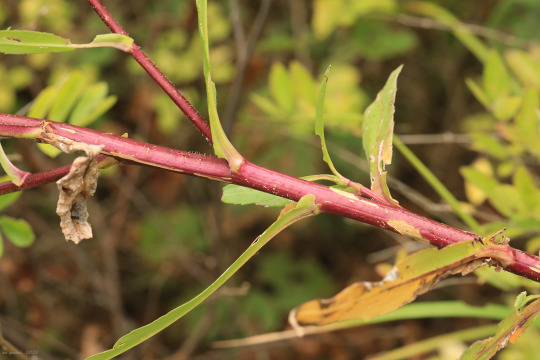
Aside from New England aster, purple-stemmed aster (Symphyotrichum puniceum), also known as purplestem aster, red-stemmed aster, and swamp aster, has the largest flowerheads of any Symphyotrichum in the Central Appalachians. A lover of marshes and streambanks, this tall, rangy perennial reaches up to seven feet in height and is instantly recognizable by its deep-red, slightly hairy stems. In late summer to early fall, purple-stemmed aster produces long panicles of gorgeous, lavender-petaled flowers with bright yellow disk florets. The panicles eventually start to droop from the weight of their massed flowers, giving the plant its rangy-looking growth habit.
#appalachia#vandalia#west virginia#autumn#fall#flora#wildflowers#symphyotrichum puniceum#purple-stemmed aster#purplestem aster#red-stemmed aster#swamp aster#coopers rock state forest
71 notes
·
View notes
Text
Smoothie Ideas
Unasked for, but liked by some! If I had access to all of these (and under responsible circumstances) and a good amount of space to work with as well as room in a freezer, and a good blender/food processor, this is what I would do. All plant parts in equal amounts. Plus plain yogurt and silky tofu for texture. And honey, tulip tree nectar, and syrups of sugar maple, boxelder maple, red maple, black maple, silver maple, mountain maple, swamp maple, yellow birch, sweet birch, water birch, paper birch, gray birch, bog birch, butternut, black walnut, American sycamore, basswood, silver linden, green alder, mountain alder, American elm, slippery elm, and rock elm for added sweetness.
Canada Day smoothie
honey: summer
American chestnut
American ginseng
aster petals:
fringed blue
heart-leaved
New England
panicled
smooth
avens roots:
purple
prairie smok
white
yellow
bayberry fruits and leaves:
northern
sweet gale
beebalm flowers:
horsemint
scarlet
wild bergamot
blackberries and raspberries:
Allegheny blackberry
American red raspberry
arctic raspberry
black raspberry
blue raspberry
Canadian blackberry
cloudberry
common dewberry
dewberry
glandstem blackberry
leafy-bracted blackberry
loganberry
Pennsylvania blackberry
purple-flowering raspberry
salmonberry
setose blackberry
sphagnum dewberry
swamp dewberry
thimbleberry
trailing raspberry
bluebells:
tall
Virginia
blueberries and cranberries:
bog bilberry
common blueberry
deerberry
highbush blueberry
hillside blueberry
large cranberry
lingonberry
lowbush blueberry
small cranberry
Canada buffaloberry
Canada ginger root
Canada yew berry
cattail hearts:
broadleaf
narrowleaf
cherries and plums:
American plum
Canada plum
black cherry
chokecherry
pin cherry
sand cherry
chokeberries:
black
red
columbine flowers:
Canada
smallflower
common hop
common yarrow flower and leaf
cow parsnip stalk
cranesbill flowers:
herb robert
wild geranium
crowberry
cucumber tree flower
currants and gooseberries:
American blackcurrant
American gooseberry
Canadian gooseberry
golden currant
northern blackcurrant
northern redcurrant
prickly gooseberry
skunk currant
dogwood fruits:
blue-fruited
bunchberry
flowering
gray
red osier
eastern hemlock tip
eastern white cedar tip
elderberries:
American red
common
false Solomon’s seal berries:
Canada mayflower
false Solomon’s seal
starry false Solomon’s seal
fireweed
fleshy dandelion flower
forget-me-not flowers:
largeseed
smallflower
spring
goldenrod flowers:
Canada
gray
prairie
sticky
goldenseal
greenbrier berries:
blue ridge carrionflower
bristly
common
Illinois
smooth carrionflower
upright carrionflower
groundcherries:
clammy
common
Virginia
hackberries:
dwarf hackberry
hackberry
haws:
cockspur
fireberry
dotted
downy
hazelnuts:
American
beaked
hickory nuts:
bitternut
pignut
shagbark
shellbark
honey locust pod pulp
honeysuckle fruits and flowers:
black twinberry
Canadian fly
haskap
mountain fly
hyssops:
anise
purple giant
Jack-in-the-pulpit berry
juniper berries:
common
creeping
eastern
Kentucky coffee tree pod pulp
kinnikinnick berry
lily flowers:
Canada
Michigan
wood
linden flowers:
basswood
silver
maple blossoms and seeds:
black
boxelder
mountain
red
silver
sugar
swamp
mayapple
milkweed pods and flowers:
butterflyweed
common
fourleaf
green comet
oval leaf
poke
prairie
purple
redring
swamp
tall green
whorled
mints:
Canada
peppermint
wild
mountain woodsorrel flower, leaf, and fruit
Oregon grapes:
creeping
Oregon grape
partridgeberry
pawpaw fruit
pine tips and young cones:
eastern white
jack
pitch
ponderosa
red
pokeweed berry juice
prickly cucumber juice
prickly pears:
fragile
devil’s tongue
ramps flower
red mulberry
redbud flower
riverbank grape
robin runaway flower
rose mallow flowers:
Halberd-leaf
swamp
rose petals and hips:
climbing wild
pasture
prairie
prickly wild
shining
smooth
swamp
Virginia
woods’
roughfruit fairybells berry
sarsaparillas:
American spikenard
bristly
wild
sassafras
serviceberries:
Allegheny
Bartram juneberry
Canadian
downy
inland
low shadbush
pigeonberry
roundleaf
saskatoon
silverberry
snowberries:
coralberry
snowberry
western
spicebush
spruce tips and young cones:
black
red
white
stinging nettle top
strawberries:
Virginia
woodland
sumac berries:
fragrant
shining
smooth
staghorn
sunflower petals, tubers, and seeds:
cheerful
giant
narrowleaf
Nuttall’s
pale-leaf
stiff
sunchoke
woodland
sweet crabapple fruit and blossom
sweetfern leaves
sweetgrass
tamarack tip
twisted stalk berries:
rose twisted stalk
watermelonberry
unicorn root
viburnum berries:
arrowwood
highbush cranberry
mapleleaf
nannyberry
snowball tree
squashberry
witch’s hobble-bush
witherod
violets:
arrowleaf
bird’s foot
Canada
crow-foot
downy yellow
early blue
Labrador
long-spurred
marsh
marsh blue
New England blue
northern bog
northern woodland
small white
sweet white
wood
Virginia creeper berry pulp
walnuts:
black
butternut
wild savoury and wild basil leaves
wild yam
wintergreens:
American
creeping snowberry
witch-hazel
5 notes
·
View notes
Text
Hi, I think someone’s trying to reach out to me. via /r/pagan
Hi, I think someone’s trying to reach out to me.
A few months ago, I started having weird dreams and all that. In one of them, I remember sitting at a table in a very dark place, and I was talking to this woman but it was very hard to tell what she looked like. I remember we talked for a bit, and she said something like “you know you’re dreaming, right?” And I said “yeah, I know”. I started seeing a lot of repeating numbers, mostly 11’s and 3’s.
Whenever I tried to meditate on who that might have been in that dream, the only thing that came to my mind’s eye were depictions of a lioness, and someone with dark, curly hair. Though it was difficult to pick out facial features.
Recently, I’ve noticed two things: 1. There are wayyy more bunnies, and generally more animals, around here than usual 2. Suddenly half of my house’s yard is filled with the native aster (panicled aster). It wasn’t even there a few days ago! Or maybe I just didn’t notice it.
So I think someone’s trying to reach out to me? I’m really not sure who, to be honest. Any help would be appreciated. It’s definitely an interesting time for me, though!
Submitted September 27, 2020 at 08:40AM by Munous
via reddit https://ift.tt/3mWA5sU
0 notes
Text
15-28 June 2020
It’s been a busy two weeks. Ann, Kitty and Chipette drove to France and Ann and Chipette will be staying until autumn. Kitty will be back for work in early July. The night they left I also had the absolute most excruciating bout of food poisoning of my life. I wanted to die. It was a bean salad I was finishing off after eating it twice earlier in the week, and it tasted perfect; however, by the time I finished washing the dishes, the pain started and only worsened over the next eight hours until I was able to vomit it all up and start to feel better. It wiped me out Friday, when, thankfully, I was working from home. I also worked that weekend, 20/21 June, which meant I had a short working week and a four-day birthday weekend! Saturday night I went to see Maarten, Mark and Mike in Kingston for dinner, the first meal I’d eaten since Thursday night, and it was delicious.
We’re making good headway in the garden and things are being brought back into order. I finally had my week in the glasshouses with Jess. I worked all week in the tropical corridor. I did a lot of planting, pruning, and pest eradication (mostly mealy bugs and aphids). We’ve been enjoying perfect summer weather too.
This week, I spent Monday and Tuesday cutting hedges which resulted in my back screaming and threatening to cramp. I cut the Elaeagnus × submacrophylla hedge with electric hedge cutters. It was the 400mm high Buxus sempervirens hedges that I cut back with sheers that hurt my back.

Thursday night I went to Elizabeth and Rob’s and we had a very nice evening which of course included some time in the jacuzzi. Dinner was duck with a sauce of grilled cherries and nectarines - delicious. I was still there at midnight so my first birthday toast! Friday evening I headed to Denis and André’s and we ate a succulent pot-roasted chicken and enjoyed a bottle of Jacquesson, my favourite Champagne. I blew out the candles with a hair-drier in light of the current precautions not to blow on food.

Saturday I made my way across London to visit Alexander and Stefan for our first catch up this year. Alexander made a delicious fish pie, one of my favourite meals. Sunday Susie and Louis came over and we enjoyed Negroni fizz and a leisurely afternoon of eating and drinking. Susie made one of her infamous risottos and a roast chicken. She also made Negroni cupcakes!

I’m very excited because I also received my invitation to Bruno et Stéphane’s wedding in December. I’m going to be Stéphane’s witness. I almost died laughing when I saw the photo...

Plant of the week 21 June
Verbenaceae Petrea volubilis L.
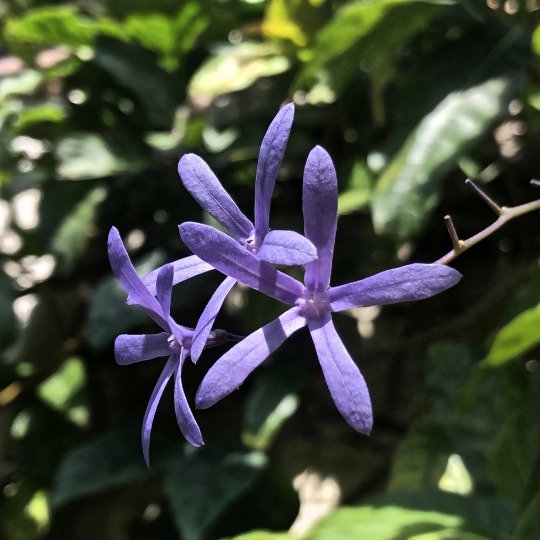
common name(s) - purple wreath, queen's wreath, sandpaper vine, sand paper
synonym(s) - Petrea amazonica Moldenke; P. arborea Kunth; P. arborea f. albiflora Standl.; P. arborea var. broadwayi Moldenke; P. arborea f. broadwayi (Moldenke) Moldenke; P. arborescens Archer ex Moldenke [Invalid]; P. aspera Turcz.; P. aspera f. albiflora Moldenke; P. atrocoerulea Moldenke; P. colombiana Moldenke; P. erecta Lodd. [Invalid]; P. fragrantissima Rusby; P. kohautiana C.Presl; P. kohautiana f. alba (G.F.Freeman & W.G.Freeman) Moldenke; P. kohautiana var. anomala Moldenke; P. kohautiana var. pilosula Moldenke; P. mexicana Willd. ex Cham.; P. nitidula Moldenke; P. ovata M.Martens & Galeottip; P. racemosa Nees; P. racemosa f. alba (Kuhlm. ex Moldenke) Moldenke; P. racemosa var. alba Kuhlm. ex Moldenke; P. retusa C.Presl; P. riparia Moldenke; P. rivularis Moldenke; P. serrata C.Presl; P. stapeliae Paxton; P. subserrata Bárcena; P. subserrata Cham.; P. swallenii Moldenke; P. vincentina Turcz.; P. volubilis var. alba G.F.Freeman & W.G.Freeman; P. volubilis var. albiflora (Standl.) Moldenke; P. volubilis f. albiflora (Standl.) Standl.; P. volubilis var. mexicana Cham.; P. volubilis f. pubescens (Moldenke) Moldenke; P. volubilis var. pubescens Moldenke
conservation rating - none
native to - Mexico to Brazil
location - tropical corridor, accession 1985-0696
leaves - rough, elliptic, dark green, paler beneath
flowers - from spring into summer, sometimes again in autumn, erect or arching panicles of small, salver-form, purple flowers with prominent, lilac calyxes; tubular blue flowers only last a few days but the larger and more showy bluish purple calyces (see photo) remain, fading first to blue and finally to a pale grey colour
habit - tender, vigorous, twining, semi-evergreen climber to height of 12m and a spread of 6m
habitat - seasonal evergreen forest along streams, roadsides, steep limestone walls in dry forest, limestone outcrops, pastures on clay and rocky soil, and on rock
pests - glasshouse red spider mite , red spider mite (box and other), scale insects
disease - generally disease-free
hardiness - to -5ºC (H3)
soil - fertile, moist but well-drained soil in a sheltered position
sun - full sun
propagation - layering, semi-hardwood cuttings
pruning - late winter or early spring
nomenclature - Verbenaceae - verbena - sacred-bough, from the Latin name, verbena, verbenae, for the leafy twigs carried by priests, used in wreaths for Druidic ritual and in medicine, used by Virgil and Pliny for vervain, Verbena officinalis, Celtic, ferfain; Petrea - honours Lord Robert James Petre (1713-1743), of Ingatestone Hall in Essex, English patron of botany and horticulture; volubilis - twining
NB - harvested from the wild for local medicinal use: flowers are combined with those of Chiococca alba to make an abortifacient tea, combined with Xanthosoma sp., Myrcia citrifolia and Capraria biflora to make an infusion that is used to treat diarrhoea; leaves are used in the treatment of diabetes; a methanol extract of the leaves (tincture) has shown hypoglycaemic activity; the crude sap obtained from the grated or macerated stem is used as a resolutive to soothe wounds and burns.
References, bibliography:
Gledhill, David, (2008) “The Names of Plants”, fourth edition; Cambridge University Press; ISBN: 978-0-52168-553-5
IUCN [online] http://www.iucnredlist.org/search [30 Jun 20]
Missouri Botanical Garden [online] http://www.missouribotanicalgarden.org/PlantFinder/PlantFinderDetails.aspx?kempercode=a539#AllImages [30 Jun 20]
Plant List, The [online] http://www.theplantlist.org/tpl1.1/record/kew-150919 [30 Jun 20]
Plants of the World [online] http://plantsoftheworldonline.org/taxon/urn:lsid:ipni.org:names:330591-2 [30 Jun 20]
San Marcos Growers [online] https://www.smgrowers.com/products/plants/plantdisplay.asp?plant_id=1221 [30 Jun 20]
Shoot Gardening [online] https://www.shootgardening.co.uk/plant/petrea-volubilis [30 Jun 20]
Useful Tropical Plants [online] http://tropical.theferns.info/viewtropical.php?id=Petrea+volubilis [30 Jun 20]
Plant of the week 28 June
Asteraceae Urospermum dalechampii (L.) Scop. ex F.W.Schmidt
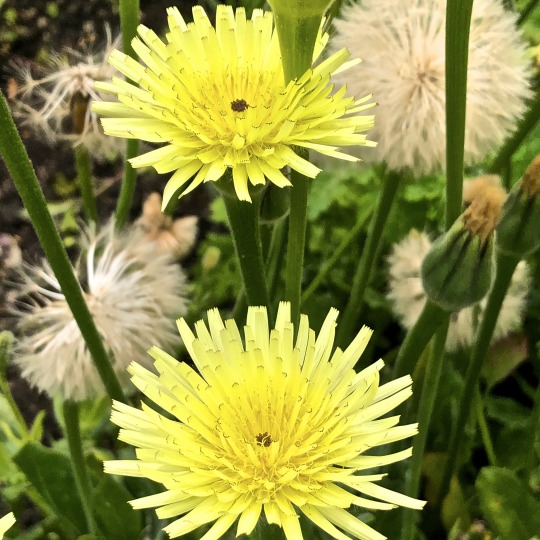
common name(s) - smooth golden fleece, sheep's beard; français : chicorée amère, morre de porc, groin de porc, grimace
synonym(s) - Arnopogon dalechampii (L.) Willd.; Tragopogon bicolor Moench [Illegitimate]; Tragopogon dalechampii L.; Tragopogon laetus Salisb. [Illegitimate]; Tragopogon verticillatus Lam. [Illegitimate]; Urospermum grandiflorum St.-Lag.
conservation rating - not on IUCN list
native to - west and central Mediterranean
location - dicotyledon order beds, accession 2010-0428
leaves - neat rosette of wavy-edged leaves with a ruff of hairy leaves half way up the flower stems
flowers - black-eyed, soft lemon-yellow
habit - perennial to 450mm tall, slowly spreading into clumps, with a single or branched stem
habitat - roadsides, dry grasslands or wastelands to 1,200m
pests - no information found
disease - no information found
hardiness - to -20ºC (H6)
soil - well-drained
sun - full sun
propagation - seeds best sown in winter or early spring to benefit from a cold spell in the wet compost to break their dormancy; may still take many months to appear, so never discard
pruning - none
nomenclature - Asteraceae - aster - star; Urospermum - tailed-seed, the beaked achenes; dalechampii - for James Dalechamp (Jacques d’Alechamps), 1513-88, French physician and botanist, author of Historia generalis planatarum 1587.
NB - a very bitter almond taste, rosettes and young shoots are eaten in salads; cooking: rosette or young leaves in salad; harvest: rosettes from September to April.
References, bibliography:
Garrigue Association Gourmande [online] http://garrigue-gourmande.fr/index.php?option=com_content&view=article&id=1121&Itemid=102 [1 Jul 20]
Génial Végétal [online] https://www.genialvegetal.net/-Urosperme-de-Dalechamps- [1 Jul 20]
Gledhill, David, (2008) “The Names of Plants”, fourth edition; Cambridge University Press; ISBN: 978-0-52168-553-5
Hardy Plant Society [online] https://www.hardy-plant.org.uk/about-plants/seed/seed-list/simple-seed-list?id=1846 [1 Jul 20]
IUCN [online] http://www.iucnredlist.org/search [1 Jul 20]
Plant List, The [online] http://www.theplantlist.org/tpl1.1/record/gcc-97599 [1 Jul 20]
Plant World Seeds [online] https://www.plant-world-seeds.com/store/view_seed_item/4461 [1 Jul 20]
Plants of the World [online] http://plantsoftheworldonline.org/taxon/urn:lsid:ipni.org:names:257064-1 [1 Jul 20]
Wikipedia [online] https://en.wikipedia.org/wiki/Urospermum_dalechampii [1 Jul 20]
SARS-CoVid-2 update

0 notes